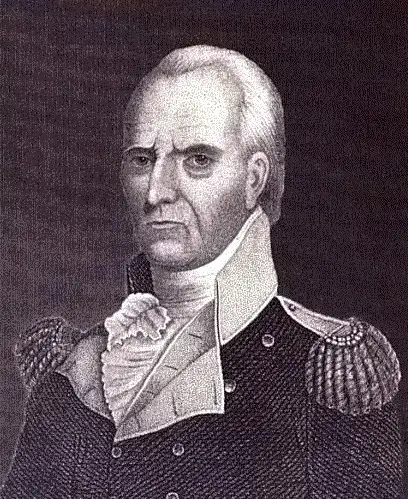John Stark
Many people played essential roles in the American Revolutionary War.
John Stark was one of these people, acting as general and participating in many battles to fight off the British and try to bring independence.

Where did they live?
Stark was knowledgeable in much of the Northern frontier of the colonies in America.
The start of the American Revolutionary War began in 1775 with the Battle of Lexington and Concord, and it was then that Stark jumped back into military service, accepting the title of Colonel in the New Hampshire Militia.
Facts about John Stark
- Stark led the militia south to help the rebels defend Boston. A short time later, the rebels took the high ground around the city and held it in fear that the British would attack. The area included Bunker Hill, Breed’s Hill, and Dorchester Heights, and it was on Breed’s Hill that the rebels built fortifications.
- British General Thomas Gage attempted to drive out the rebels, and American Colonel William Prescott held the hill through intense bombardment. This was the beginning of the Battle of Bunker Hill, and Prescott was desperate for help.
- Stark and his militia, called “minutemen,” arrived to assist Prescott in the battle. Upon arrival, the campaign was a mess, with men afraid to get anywhere near the British fire. Stark ordered the other men to move and marched his minutemen to Prescott without any of the men getting injured.
- Stark moved his minutemen to positions that would fortify the grounds and keep the British away from landing. Stark’s men built up a two-rail fence and put up a simple but efficient wall where the men would hide. When the British did arrive, Stark’s men stood up, and all took aim and fired at the British at the same time. They succeeded in killing 90, and the British fusiliers began to retreat.
- The British sent their infantry next, and this group was also destroyed by Stark’s minutemen. A third charge was made by the British, and again the minutemen took them down. The British then made a choice to withdraw and land somewhere else.
- As the battle continued, the rebel forces had to leave the hill, and Stark’s men provided cover for the retreating troops of Col. Prescott.
- Although the British did take the hill, they had experienced such significant losses, including their officers, that they couldn’t maintain the hold. Two weeks after the battle, General George Washington placed cannons on Bunker Hill and Dorchester Heights. The cannons were a threat to any British ship that entered Boston Harbor and forced British General Gage to withdraw from the forces.
- Stark had proven his worth to George Washington, and he offered him a command in the Continental Army. Stark and his new infantry went with Washington to New Jersey and fought in the battles of Trenton and Princeton.
- Stark was asked by Washington to go back to New Hampshire and get more recruits. When he got to New Hampshire, he found a man that had not shown any bravery at Bunker Hill had been promoted to Brigadier General in the Continental Army, passing over Stark. At this point, Stark was disgusted and resigned his commission.
- Within four months, Stark was offered the New Hampshire Brigadier General commission. He accepted the position with restrictions that he did not have to answer to Continental Army authority. This was tested when Stark refused an order by a Brigadier General. He moved his men to meet the British onslaught at the Battle of Bennington so they could fight the British and the Hessian troops.
- Stark’s critical decision helped to contribute to the surrender of the northern army at the Battle of Saratoga a few months later. This is considered to be a turning point in the Revolutionary War, and Stark’s shrewd military savvy helped to save the day. He was called the “Hero of Bennington.”
- Stark later retired to his farm in Derryfield.
What did you learn?
What is the name given to John Stark for his decisions on the Battle of Bennington?
The Hero of Bennington
What was the first American Revolutionary battle that John Stark participated in?
Battle of Lexington and Concord
What commission did General George Washington give John Stark?
Command position of the Continental Army
What actions at Bunker Hill did Stark and his men take that resulted in destroying three British attacks?
Build up a fence and wall defense
What commission did Stark eventually get after he had resigned initially?
Brigadier General
What were John Stark’s volunteer soldiers called?
Minutemen



